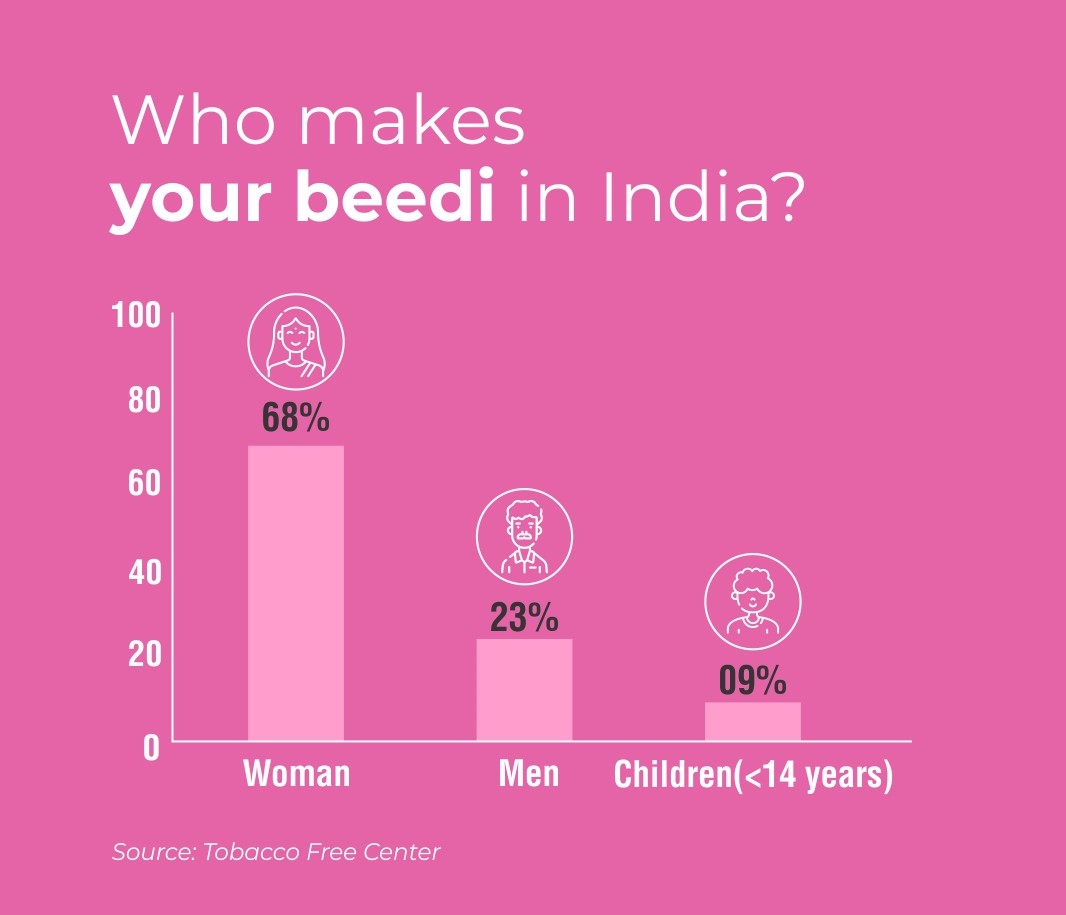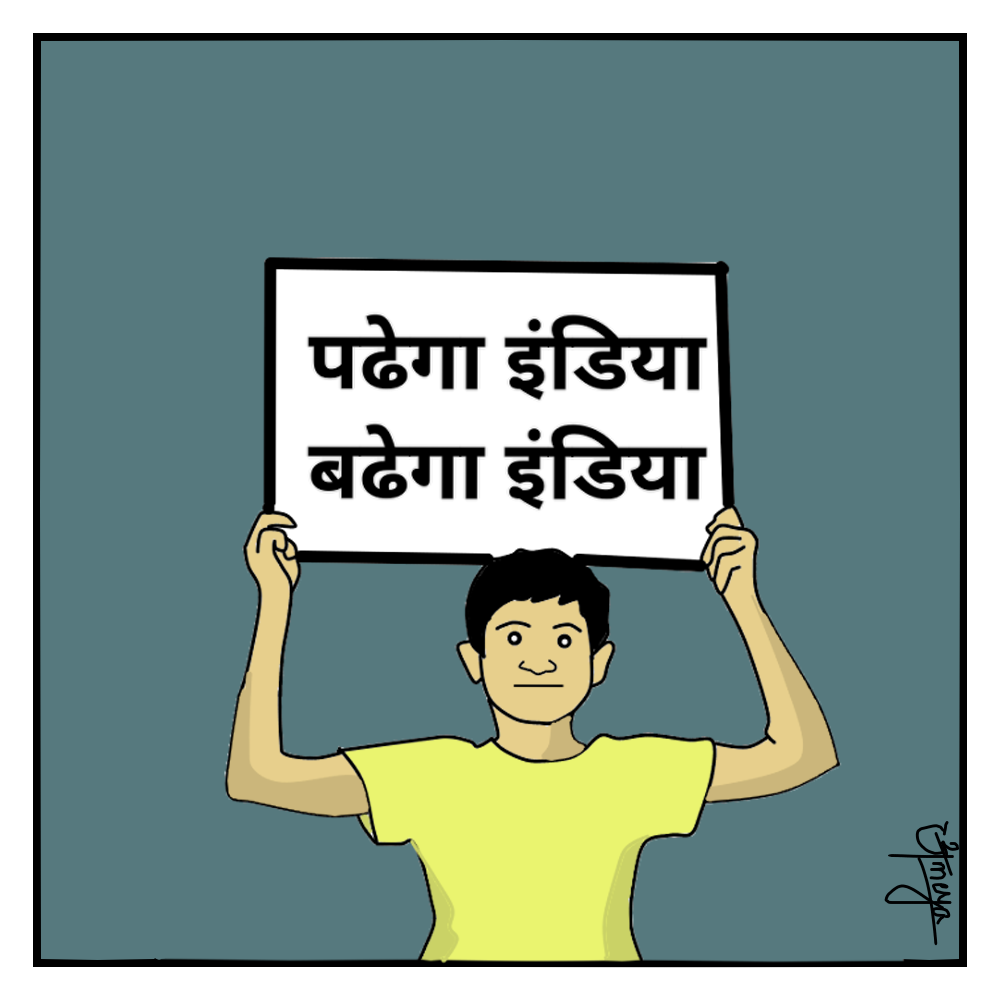July, 2020
An exploration of the exploitation of children in the paan and beedi industry in India
7 minutes read
The Paan and Beedi industry falls under the specialized industries domain. This unique industry has unique ways of functioning as well. Unlike many other industries that have the scope for a designated workplace, this industry has several workers who operate from home. It is largely dominated by private manufacturers and contractors, the main source of labor being poor households with women workers who can stay at home and engage in beedi-rolling. Although there are fixed minimum wages for per 1,000 beedis rolled, these wages vary from state to state. While the rate in Gujarat is Rs. 64.8/-, in Tripura it is as low as Rs. 29/- per 1,000 beedis rolled. Moreover, these regulations are rarely followed or closely monitored. Most contractors promise wages as per a piece-rate system which tends to be exploitative in its very basis. So the more beedis workers roll, the more money they can earn. The incentive is such that long-lasting exposure to the toxic substances that go into the making of a beedi is rampant. What is more alarming is that when contractors come to examine the beedis, they often reject a good amount citing reasons such as low quality, and thus reject the labour that goes into the making of those beedis and consequently the pay as well.
Although the industry is male-dominated, most of the unrecognized labour, specifically, beedi-rolling is done by the women employed. Along with household chores, women also take up their beedi-rolling work at home. However, within this vast industry, spread across several rural areas in the country, the process of folding raw tendu leaves into perfect beedis is not only done by women but also by the children of the household concerned. These leaves and the dust particles of tobacco are hazardous to health and the workers who roll these beedis are the first people (after the collectors of the leaves) to come in contact with the toxic nature of these leaves. Given how dangerous the health hazards of these leaves are, it would seem like keeping children as far away as possible from such substances would be the best way to save them from the risk of ill health. However, this is far from reality. Out of the total counted beedi workers in India, it is estimated that over 10% girls of the total number of female workers and 5% boys of the total number of male workers from the industry are under the age of 14. In other words, around 9% of counted beedi workers in India are children under the age of 14. These alarming figures have several nuances which this piece aims to explore.

How do children become a part of this?
Since the income is based on the piece-rate system, women workers require as many hands on deck as possible to complete this task and earn in accordance with the amount they produce. The fact that this industry is home-based makes it easier to take ‘help’ from the children in the house. The women workers don’t perceive it as child labour because of their objective to make as many beedis so as to earn. Further, since their earnings will be used for household expenses, it helps to rationalize the fact that children assist the women in their labour. The impact of exposure to beedi-rolling is not visible until very long. Fingertips get damaged due to increased exposure, food in the house begins to turn stale faster due to the storage of tobacco in the house. Respiratory diseases like tuberculosis and bronchial asthma are fairly common among workers engaged in beedi-rolling. Now, when children are exposed to such dire health-based consequences (for as many as 14 hours per day), they are automatically at a higher risk of falling seriously ill and it restricts their personal growth and development as well.
The most glaring reason why children are brought into this extremely hazardous job is that all sort of assistance is required to produce more in the hope of earning more. This requires some analysis of the fixed minimum wages, regulation of the ‘fixed’ nature of wages, and the conditions under which these wages are determined. By bringing about some regulation and fixing minimum wages, workers can choose their conditions of work, as well as the time they want to devote to work, in case of this industry. As a result of fixed minimum wages, workers can step out of the unhealthy “incentivizing” piece-rate system where accountability of the income transaction rests wholly and solely on the amount of labor put in by the worker. This practice needs to end, and fixing a minimum wage rate can bring about that change.
Another reason why women and children are the most vulnerable group under this industry is because of how easy it is for employers to take away this job from them. The home-based nature of this industry means that the employers don’t have to invest in any fixed capital in terms of a separate, physical industry and workers don’t have to be displaced. So, workers are quite literally at the mercy of the employers.
If for some reason, the industry is not thriving in a particular region, the employers can take away the jobs of these workers having to lose nothing in the process and shift to another place to conduct the same production elsewhere.
An even more alarming issue is the recognition by the government that this industry gets. The government recognizes only 11% of the total workers. A lot of the identification requires fingerprints of the workers involved and a lot of times these fingerprints don’t get recognized because of how damaged and faded their fingertips are. Having children to contribute to this hazardous nature of the job further puts them at a dangerous risk of losing their fingerprints early on. If the damage to their fingertips restricts their ability to use a pen/pencil/other writing devices that would be a greater impairment in their process of education and literacy as well. Children as young as 3-5-year old are employed in this industry, helping their mothers/other women in the house in this work. Such an induction, right in the child’s formative years poses a serious threat to their physical wellbeing.
Why is it that such practices ‘pass’?
If we look at the rather outdated Child Labor Protection and Regulation Act of 1986 which prohibits the employment of children below the age of 14 years of age, there are certain loopholes that allow for their employment under certain (equally hazardous) conditions.
Employment of children below the age of 14 is permitted if they are registered in a school and if they are assisting at home. This allows for exploitation of children much younger than 14 years old who are based inside the home and is left unrecognized by this act.
This labor is not just warranted by the women of the house who are engaged in this work, employers as well encourage the employment of children and it has become mainstream to have children work under these hazardous circumstances.
This exposure not only increases the likelihood of children contracting various diseases as a result of tobacco, but also limits the educational opportunities available to them. This limited access to education helps to further the vicious cycle of poverty that many of the workers’ families already find themselves in.
What can be done?

We need to call for a re-evaluation of the provisions that are in place to protect children from exploitation. This re-evaluation needs to identify similar industries, for instance, the industries that employ children in attaching beads to garments, the fire-cracker industry, industries that employ children in the chain of drug dealing, as assistants in restaurants and food joints, etc. Further, these can be clubbed under an umbrella provision with unique subsets of industries that caters to ensure protection of Child Rights. Policies should also examine the conditions under which children are employed and invest in eradicating the root causes of such conditions so as to ensure the wellbeing of children. This points to how policy interventions should focus on empowering and making parents and caregivers of the child by making them self-sufficient. This endeavor calls for several reforms in the working conditions in order to make them fair, just, dignified and humane.
Health and education are the two most important aspects of any individual’s life. It is important that these two pillars of a person’s development are nurtured and encouraged. Efforts must be made to stop exploitation in this sector so as to provide equal opportunities to aspire, and conditions to bring these aspirations in reality for ALL children.
References
- Resource Centre for Tobacco Free India: Bidis: An Overview, 2009
- Tobacco-Free Kids: Bidi Industry in India, 2008
- Pulitzer Center: Beedi Workers in India, 2019
- Pulitzer Center: Fading Fingerprints of Beedi Workers in India, 2020

[…] lives were already in drudgery, reeling under health hazards caused by rolling beedis and abject poverty, when COVID hit. When the lockdowns were imposed, the Beedi industry suffered a major shock. In […]
[…] Child labour is inadvertently encouraged in this industry and it has dire consequences. When a child is asked to assist his/her/their parent in this labour-intensive activity, neither the parent nor the child look at this assistance as ‘employment’. It is simply some additional hands and their own children’s in this regard. Hence, although parents may not encourage this labour practice, they do end up asking for help which does constitute as child labour. Why child labour? Because this ‘help’ is often extended at the cost of school hours, life skills education and most importantly by being exposed to acute health hazards. […]